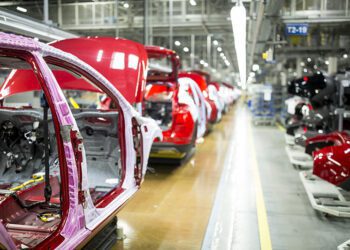India’s transition to electric mobility isn’t solely driven by technological advancements. Instead, a harmonious blend of robust infrastructure and supportive policies serves as the bedrock of this paradigm shift. “For an EV revolution to truly gain momentum, it needs both the highway of infrastructure and the compass of clear policy direction.”
1. Infrastructure: Building the EV Ecosystem
Charging Stations: The very essence of EVs lies in charging stations. By setting up a network of fast and efficient charging points across highways, cities, and rural areas, India can address the primary concern of range anxiety and ensure seamless intercity and intracity travel.
Battery Manufacturing and Recycling Plants: India’s dependency on importing batteries has been a constraint. Developing indigenous battery manufacturing units not only brings down the cost of EVs but also ensures better quality control. Furthermore, setting up recycling units ensures a sustainable lifecycle for these batteries.
Smart Grids: With an influx of EVs, the strain on the electrical grid will be palpable. Upgrading to smart grids that can manage peak load times and offer dynamic pricing based on demand will be crucial.
2. Policy: Framing the Path Ahead
Incentives and Subsidies: Initiatives like the Faster Adoption and Manufacturing of Hybrid and Electric Vehicles (FAME) are essential in making EVs more attractive to consumers. Through subsidies, tax cuts, and rebates, the government is leveling the playing field between EVs and conventional vehicles.
R&D Promotion: By offering tax breaks and grants to companies and institutions working on EV technologies, the government is fostering a culture of innovation, ensuring that India stays at the forefront of EV advancements.
Public Transportation Transition: Policies mandating a phased transition of public transport fleets to electric can have a significant impact. Buses, taxis, and auto-rickshaws running on electricity can drastically reduce urban emissions.
Awareness Campaigns: No policy can be truly effective without public buy-in. Government-sponsored awareness campaigns about the benefits of EVs can go a long way in changing public perception and increasing adoption rates.
Conclusion
The marriage of infrastructure and policy is integral to India’s electric dreams. While infrastructure lays the tangible groundwork, policy creates an environment conducive to growth and innovation. As the nation accelerates its electric journey, these twin pillars will be its steadfast companions, ensuring a ride that is smooth, sustainable, and transformative.




















